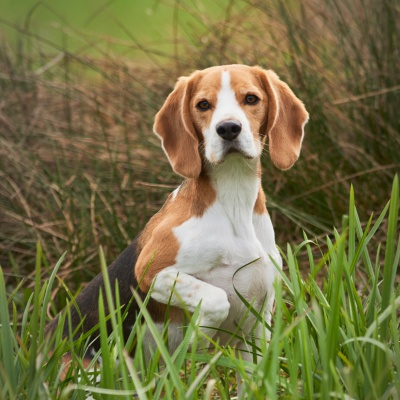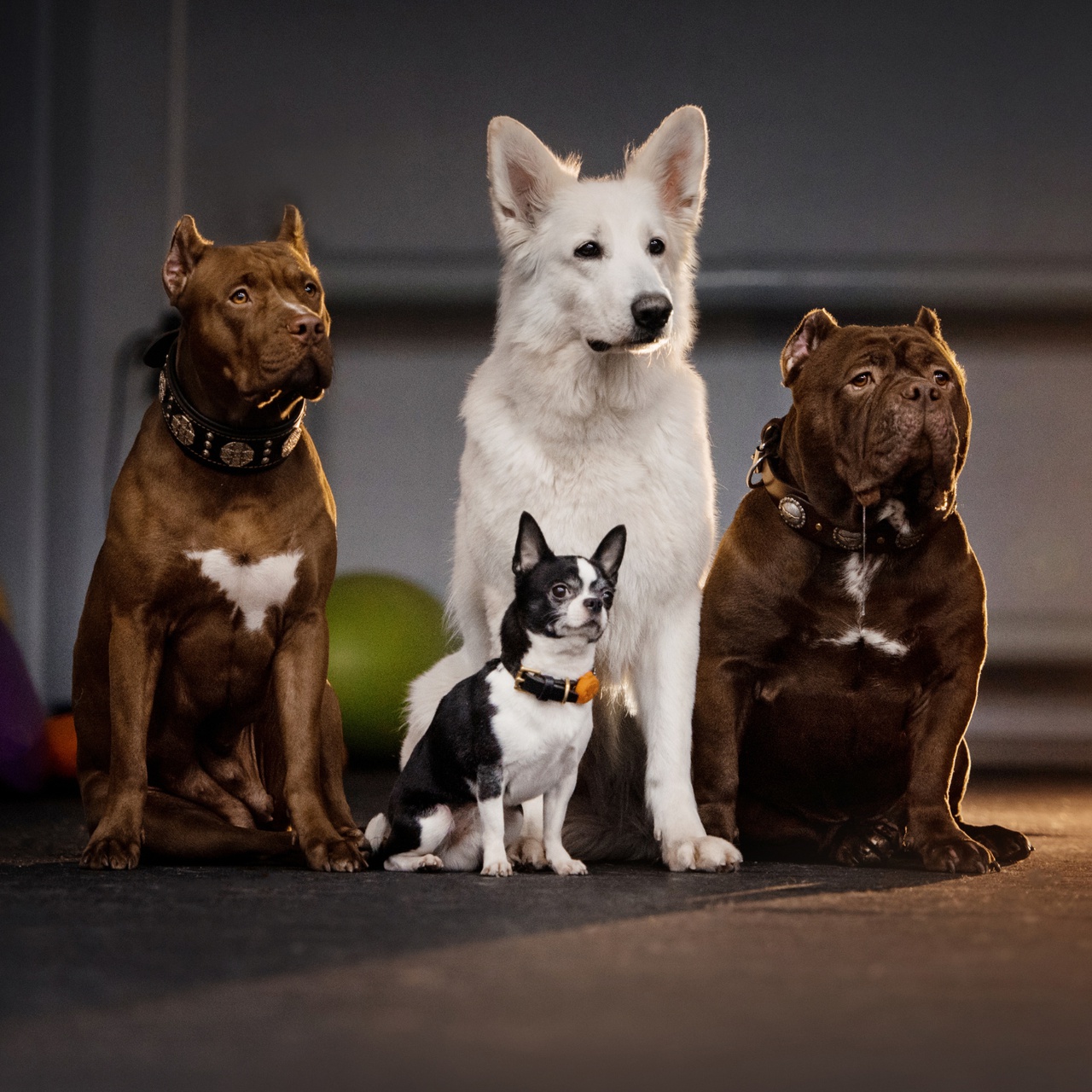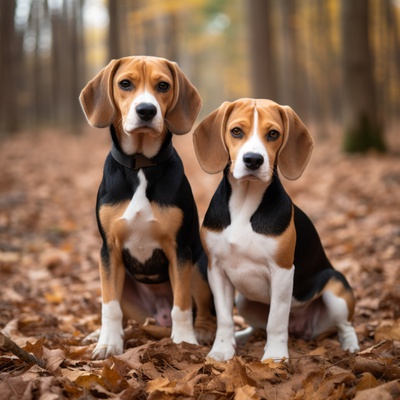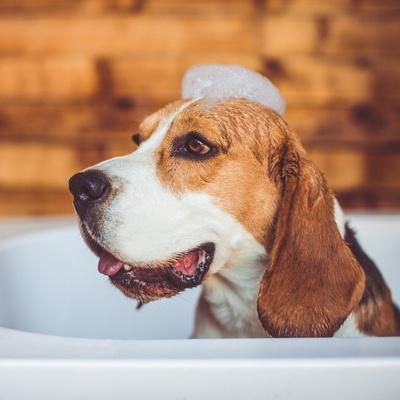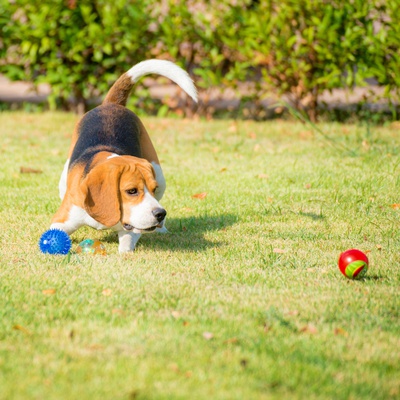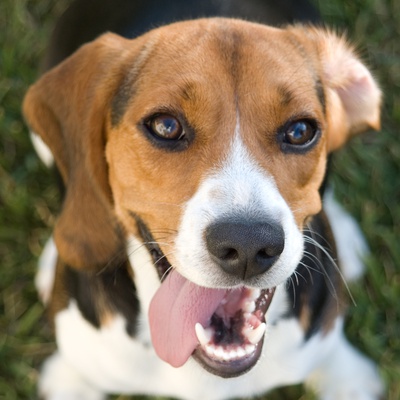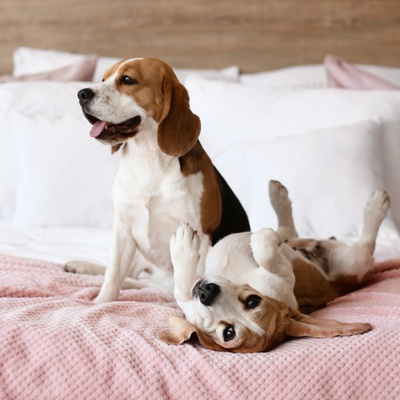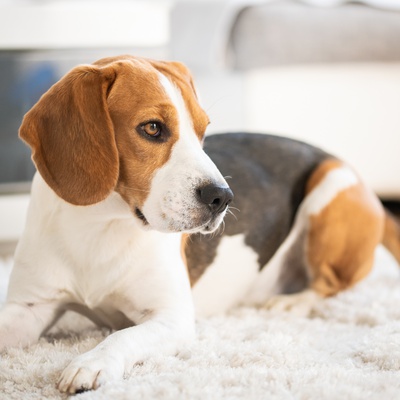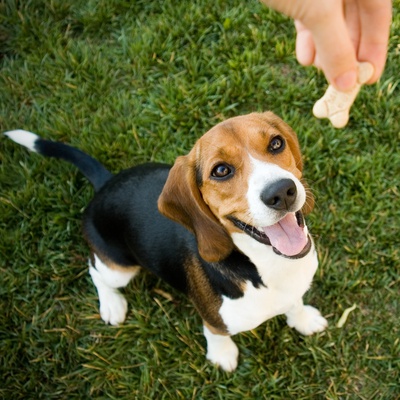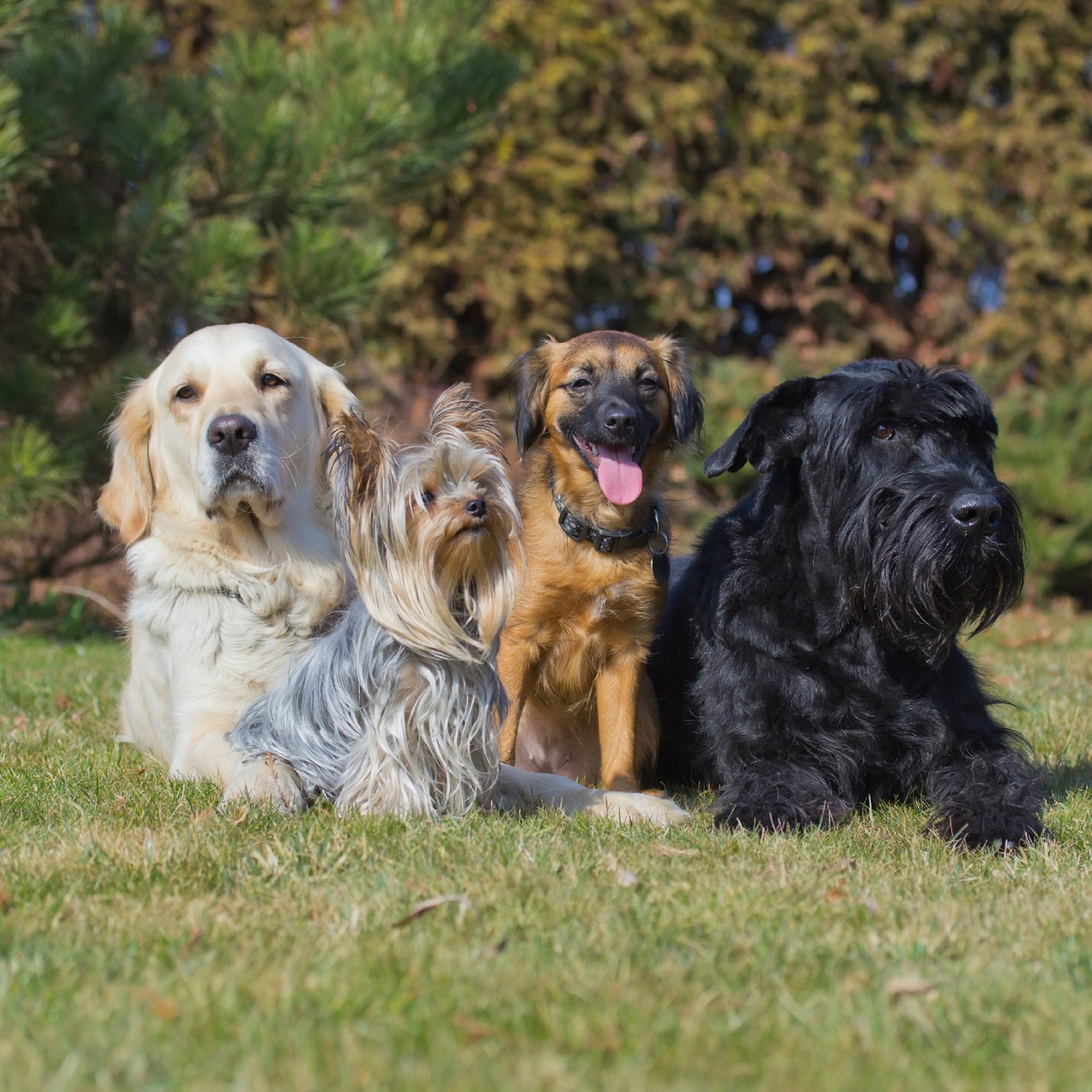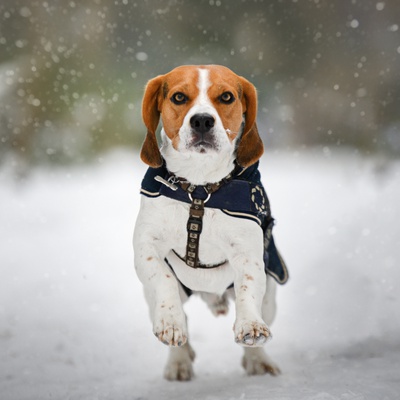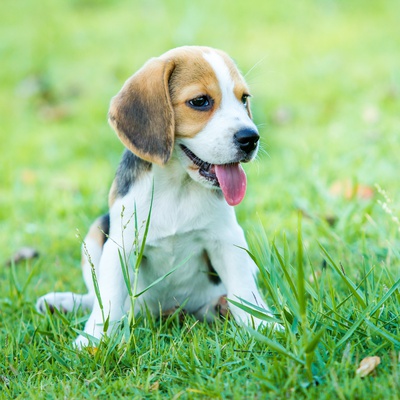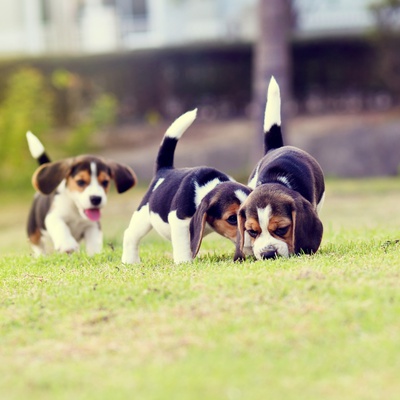Introducing the Beagle
Find out everything you need to know about the Beagle: its characteristics, its behaviour, its training and how much one costs.

Find out everything you need to know about the Beagle: its characteristics, its behaviour, its training and how much one costs.
The Beagle's history is as intriguing as its renowned sense of smell. Emerging from ancient Greece and refined in the United States, the breed has been around for centuries, originally used for tracking small game due to their keen noses. Nowadays, the Beagle stands proud as one of the world's most adored and popular breeds.
These dogs shine in various roles from scent detection jobs at airports to being the quintessential family pet. Their sociable nature paired with their boundless affection makes them not just great pets, but genuine family members who will consistently offer love and companionship.
This section outlines the unique features of the Beagle breed of dog.
The Beagle, a group 6 scenthound, is renowned for its keen sense of smell, used in hunting and detection.
Beagles are medium-sized dogs. Typically, they stand about 14 to 16 inches at the withers and weigh between 20 pounds and 25 pounds.
Beagles have a short, dense coat, designed to protect them from harsh weather conditions while they're on the hunt.
Beagles primarily have tri-colored coats of black, white, and tan, though some may display bi-colors or lemon hues.
Beagles are versatile in adapting to various environments. However, given their energetic nature, they appreciate open spaces like gardens to play and explore.
Known for their friendly disposition, Beagles are incredibly social. They get well with children and other animals, making them delightful family companions.
Beagles are generally robust and healthy. However, they can be prone to certain conditions such as ear infections due to their floppy ears or hip dysplasia.
Beagles are lively and clever, responding best to patient training with positive reinforcement and rewards.
We can help!
Every dog has its own character, and so do you. Making the right choice will ensure his well-being and yours.
Take our quiz to find out which breed is right for you, based on your personality, lifestyle, location and many other criteria.
Don't wait any longer and take the quiz to find out the answer!
The Beagle is a compact, energetic dog with a dense tri-color coat. Its expressive face and soulful eyes reveal its playful spirit and deep emotions.
Beagles are relatively small dogs, but don't let that fool you into thinking they lack in personality or stamina. Females usually stand between 13 and 15 inches, while males can be slightly taller, ranging from 14 to 16 inches.
When it comes to weight, female Beagles usually tip the scales at between 20 and 23 pounds, while males weigh in at around 22 to 25 pounds.
Beagles experience steady growth during their puppyhood. By the age of 6 months, a Beagle puppy typically weighs around 12 to 15 pounds. They generally reach their full adult size and weight by their first year, though some might continue to fill out until they're around 18 months old.
Beagles possess a short coat that’s smooth to the touch, giving them an impeccable neatness. Despite its brevity, the coat is thick and dense, providing them sufficient protection from the elements without any additional fringes or waves.
Colour is a signature trait of the Beagle. This breed is renowned for its tricolour pattern: a blend of black, white, and tan. However, there are variations within this palette, and you may find Beagles with two-tone combinations or even lemon and white shades. The specific arrangement of these colours can vary, but the classic tricolour remains the most emblematic.
Beagles have an uncomplicated coat in terms of maintenance. Characterized by its short length and thick undercoat, they do shed periodically, especially during the shedding seasons of spring and autumn. Routine brushing, at least once a week, helps in managing the shedding and maintaining the coat’s healthy glow.
Bathing a Beagle isn't frequently required; however, once every few months or when they get particularly dirty would suffice. Given their adventurous nature, it's essential to regularly check their coat for any dirt or ticks after outdoor escapades.
The Beagle is a well-proportioned canine with a gentle, alert expression. Its domed head and medium-length muzzle are complemented by large, hazel or brown eyes that convey innocence. The drooping ears set low frame the face, while its compact body highlights agility and stamina. The tail, carried high, is moderately long with a characteristic white tip, visible even in tall grasses
Known for their gentle nature and insatiable curiosity, Beagles are friendly, loyal companions, always eager to explore.
In the vast canine world, over 400 recognized dog breeds are classified into 10 distinct groups, each defined by common characteristics and roles.
The Beagle is a proud member of group 6, which consists of scent hounds and related breeds. This group, boasting breeds such as the Bloodhound, Bassett Hound, and Coonhound, specializes in tracking by scent rather than sight. These dogs are celebrated for their exceptional noses and persistent tracking abilities. Historically, many of these breeds were hunting companions, chasing game based on scent trails. The Beagle, in particular, stands out for its exceptional sense of smell, intelligence, and affable nature, making it a perfect hunting partner and family pet.
Primarily, Beagles were developed for tracking small game, like rabbits, showcasing their dedication and determination when on a scent.
The Beagle, with its curious nature and zest for life, is a sheer joy to be around. Exhibiting a sprightly demeanor, these small hounds are brimming with affection and develop deep bonds with their human companions. Their enthusiastic tail wags and affectionate nuzzles make it abundantly clear how much they adore their owners. For a Beagle to truly thrive, it's imperative for the owner to be present and responsive. While Beagles cherish companionship, they also have a streak of independence, inherited from their hunting ancestry, which deserves understanding and respect.
Beagles are renowned for their sociability, making them great with both adults and children. They're often the center of attention and usually get along with other pets. However, early socialization is key to enhancing their friendly nature and minimizing territorial tendencies. Given their amicable temperament, they're considered ideal for families with kids, but early training ensures they mature into well-adjusted adults.
The Beagle's adaptable nature means they can comfortably reside in a variety of settings, from apartments to spacious homes, and from bustling cities to serene countryside locales. While they may adjust seamlessly to different environments, the crux of their well-being lies in the attention they receive from their owner. These little hounds thrive on companionship and will eagerly shadow their human partners. To cater to their energetic disposition, it's recommended they be taken on at least two walks daily, each spanning around 30 minutes.
Beagles are naturally curious with a keen sense of smell. An outdoor space, be it a backyard or park, allows them to exercise their tracking instincts and release their energy. Despite their small size, they have a strong passion for exploration and adventure outdoors.
Beagles are bright and notably intelligent, but their innate curiosity can sometimes lead to selective listening. Training a Beagle requires patience and consistent techniques that tap into their instinctual behaviors.
Utilizing rewards, especially scented treats, can be a game-changer for them. Given their propensity to follow their noses, equipping a Beagle with a GPS collar can be a wise investment, ensuring that even if they get lost trailing a scent, they can be easily found.
Beagles are eager to please but can be independent, sometimes showing stubbornness. Successful training recognizes their sociable nature, requiring early interactions with other dogs and people. As former pack animals, they thrive in group training settings. Engaging their curiosity by turning training into an adventurous puzzle is key to their learning.
Take the test and find out the dog breed that matches your personality and lifestyle.
The Beagle, a small but energetic breed, generally boasts a robust health profile. Like any dog, however, routine care and attention to their unique needs can ensure they remain free from certain common ailments.
While Beagles are generally known for their good health, they are not exempt from potential health issues. They can be prone to specific conditions such as epilepsy, hypothyroidism, and intervertebral disc disease. Their floppy ears, while endearing, can make them susceptible to ear infections if not regularly checked and cleaned. As is common with many breeds, Beagles can also face hip dysplasia or certain eye conditions like cherry eye.
The typical life expectancy for a Beagle ranges between 12 to 15 years.
To ensure your Beagle's longevity and health, prioritize regular veterinary visits for vaccinations, de-worming, and pest treatments. At home, grooming matters: brush their short coat weekly to manage shedding and promote skin health. Weekly ear cleaning prevents infections, and frequent dental care combats gum issues and bad breath. Regularly trim their nails to keep them in good shape.
It's important to note that Beagles aren't hypoallergenic. Those with allergies should spend time with Beagles before deciding to adopt to gauge any allergic responses.
Just as with any breed, Beagles come with their unique nutritional needs. To sustain their lively nature and robust health, a balanced diet replete with proteins and essential vitamins is crucial. High-quality kibble tailored for Beagles is often recommended since it provides a balanced dietary base. Should there be an increased requirement for protein, supplementing their meals with lean white or red meat can be a good option. However, it's always imperative to ensure fat intake remains moderate.
Beagles, with their keen sense of smell, can often be led by their noses straight to food! It's important to monitor their intake and feed them at consistent times to maintain their ideal weight and overall health.
The Beagle is a cherished breed with a notable history. Given its popularity, there are many breeders, so choose wisely before adopting.
Embracing a Beagle into your family is not a decision to be made on a whim. Multiple factors should be given due consideration, emphasizing the need for well-informed decisions. Key among these is selecting a credible breeder. This entails visiting the breeding facility to firsthand evaluate the dogs' living conditions and their behavior.
Assessing the health of the puppy, as well as that of its parents, is also vital. It's pivotal to ensure both the puppy and its parents exhibit sound health. Breeders should willingly provide transparent information about the puppy's current health status and any health concerns related to its lineage.
Lastly, mandatory electronic identification, like microchipping, is not always mandated at the federal level in the United States for cats and dogs. But microchipping is widely acknowledged as a successful way to permanently identify pets and increase the possibility of reuniting lost pets with their owners, even in the absence of universal regulations. As a pet owner, it is advised to inform yourself about municipal laws to ensure the safety and wellbeing of your pet.
The financial commitment associated with acquiring a Beagle is subject to variation based on several determinants. Factors such as the dog's lineage, pedigree, the reputation of the breeder, and the dog's age play pivotal roles in determining the price. In the current market, Beagle puppies typically range between
to
, though this can oscillate based on the aforementioned factors.
Beyond the initial cost, maintaining a Beagle incurs annual expenses which include, but are not limited to, veterinary fees and sustenance. These recurrent costs can average between
to
annually.
Choosing a dog that matches your personality and lifestyle will ensure your well-being and his!
